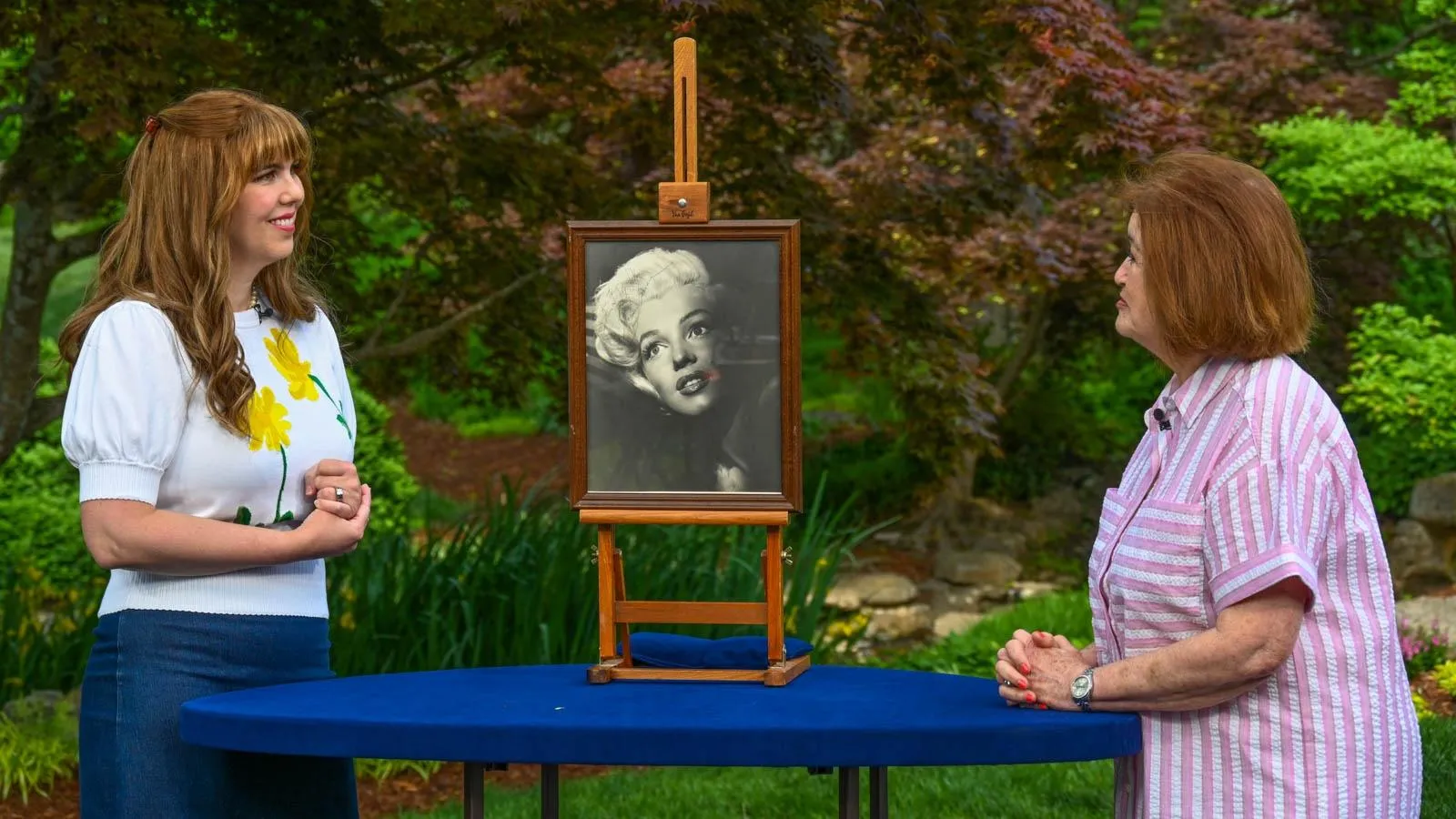GUEST: It's, uh, passed down through the family. Western Kentucky, uh, origins. We called it the bird picture, we do call it the bird picture. I, uh, just always thought it was super-kitschy and cute.
APPRAISER: This is called a calligraphic drawing or a Spencerian drawing, where most of the work is done with pen and ink.
GUEST: Right.
APPRAISER: And then this has been hand-painted through, over the pen-and-ink work, which is very unusual for these drawings. The vibrant colors of this, the picture is fabulous to start with. Then you start sort of digging in and you say, "Well, what is the rooster, and how does this relate to 'the Democratic Family'?" It says "Troy, Indiana, 1884." It was made by an artist named Ainsworth. The rooster was a symbol of the Democratic Party.
GUEST: Okay.
APPRAISER: And it was a symbol that was first invented in Indiana in 1840 as a symbol for the Democratic Party. So what this is is a campaign piece for the Democratic candidate for president, Grover Cleveland.
GUEST: Okay.
APPRAISER: In 1884.
GUEST: Wow.
APPRAISER: It's really spectacular, it's really something that... None of us at the folk art table had ever seen a drawing like this, a Spencerian or calligraphic drawing, that had been colored like this. When you start reading, they're basically morals about how we should be looking at our neighbors, and how we should be watching out for our government. And I can read this side. "First, mind your own business." Number two, "No prescription for opinion's sake." And it goes on and on about that. And they're basically telling people, be careful of the government. "No governmental building up of the interests of the few at the expense of the many." And they're, they're sort of the, the Democratic morals for that, for that particular year. Grover Cleveland, by the way, won the election in Indiana by a slim 1.3% margin.
GUEST: Wow.
APPRAISER: And how long have you had it?
GUEST: Recently-- I got it within the last six months.
APPRAISER: Okay.
GUEST: My mother has had it for 30 years.
APPRAISER: Okay, personally, I don't like the mat. I think it detracts from it.
GUEST: Right.
APPRAISER: Uh, but there's probably a reason why that mat's put in there. Maybe the edges of the painting are cracked or torn, but you can see here it's sort of impinging on the rooster's head.
GUEST: Right.
APPRAISER: Maybe at some point, you want to go into a good frame shop, have that mat taken off, see what it looks like, and see what, if it actually looks better without it.
GUEST: So was this a campaign poster?
APPRAISER: I'd say that it was probably commissioned by a Grover Cleveland supporter.
GUEST: Okay.
APPRAISER: It was the kind of thing you would hang maybe in your kitchen.
GUEST: Yeah.
APPRAISER: Maybe over, in the parlor. It was demonstrating your support for the Democratic presidential candidate. We all put our heads together at the folk art table, and all of us agreed on an auction estimate of around $4,000 to $6,000.
GUEST: Okay. So would you keep the frame?
APPRAISER: Uh, if the frame is an original frame, yes, absolutely.
GUEST: So you got to keep the frame.
APPRAISER: Gotta keep the frame.
GUEST: Okay.












